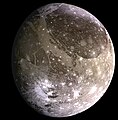ფაილი:The Galilean satellites (the four largest moons of Jupiter).tif

ათე TIF ფაილიშ JPG გიწოთოლორაფაშ ზჷმა რე: 800 × 262 პიქსელი. შხვა გოფართაფა: 320 × 105 პიქსელი | 640 × 210 პიქსელი.
ორიგინალი ფაილი (1,830 × 600 პიქსელი, ფაილიშ ზჷმა: 1.51 მბ, MIME ტიპი: image/tiff)
ფაილიშ ისტორია
ქიგუნჭირით რიცხვის/ბორჯის თიშო, ნამჷ-და ქოძირათ ფაილი თი რედაქციათ, ნამუ რედაქციას თი რიცხვის/ბორჯის რდუნ.
| რიცხუ/ბორჯი | ჭკუდი | გონზჷმილაფეფი | მახვარებუ | კომენტარი | |
|---|---|---|---|---|---|
| მიმალი | 16:54, 29 ქირსეთუთა 2011 | 1,830 × 600 (1.51 მბ) | Prof. Professorson | {{Information |Description=This composite includes the four largest moons of en:Jupiter which are known as the Galilean satellites. The Galilean satellites were first seen by the Italian astronomer en:Galileo Galilei in |
ფაილიშ გჷმორინაფა
გეჸვენჯი ხასჷლა გჷმირინუანს თე ფაილს:
ფაილიშ გლობალური გჷმორინაფა
თე ფაილი გჷმირინუაფუ გეჸვენჯი ვიკეფს:
- af.wikipedia.org-ს გჷმორინაფა
- als.wikipedia.org-ს გჷმორინაფა
- ar.wikipedia.org-ს გჷმორინაფა
- ast.wikipedia.org-ს გჷმორინაფა
- az.wikipedia.org-ს გჷმორინაფა
- ba.wikibooks.org-ს გჷმორინაფა
- be-tarask.wikipedia.org-ს გჷმორინაფა
- be.wikipedia.org-ს გჷმორინაფა
- bg.wikipedia.org-ს გჷმორინაფა
- bn.wikipedia.org-ს გჷმორინაფა
- bn.wikibooks.org-ს გჷმორინაფა
- bs.wikibooks.org-ს გჷმორინაფა
- ca.wikipedia.org-ს გჷმორინაფა
- cs.wikipedia.org-ს გჷმორინაფა
- en.wikipedia.org-ს გჷმორინაფა
- en.wikibooks.org-ს გჷმორინაფა
- es.wikipedia.org-ს გჷმორინაფა
- et.wikipedia.org-ს გჷმორინაფა
- eu.wikipedia.org-ს გჷმორინაფა
- fi.wikipedia.org-ს გჷმორინაფა
- fr.wikipedia.org-ს გჷმორინაფა
- gl.wikipedia.org-ს გჷმორინაფა
- he.wikipedia.org-ს გჷმორინაფა
- hi.wikipedia.org-ს გჷმორინაფა
- hu.wikipedia.org-ს გჷმორინაფა
- hy.wikipedia.org-ს გჷმორინაფა
- id.wikipedia.org-ს გჷმორინაფა
- it.wikipedia.org-ს გჷმორინაფა
- ja.wikipedia.org-ს გჷმორინაფა
- kk.wikipedia.org-ს გჷმორინაფა
- ko.wikipedia.org-ს გჷმორინაფა
ქოძირით, თე ფაილიშ გლობალური გიმორინაფა.





